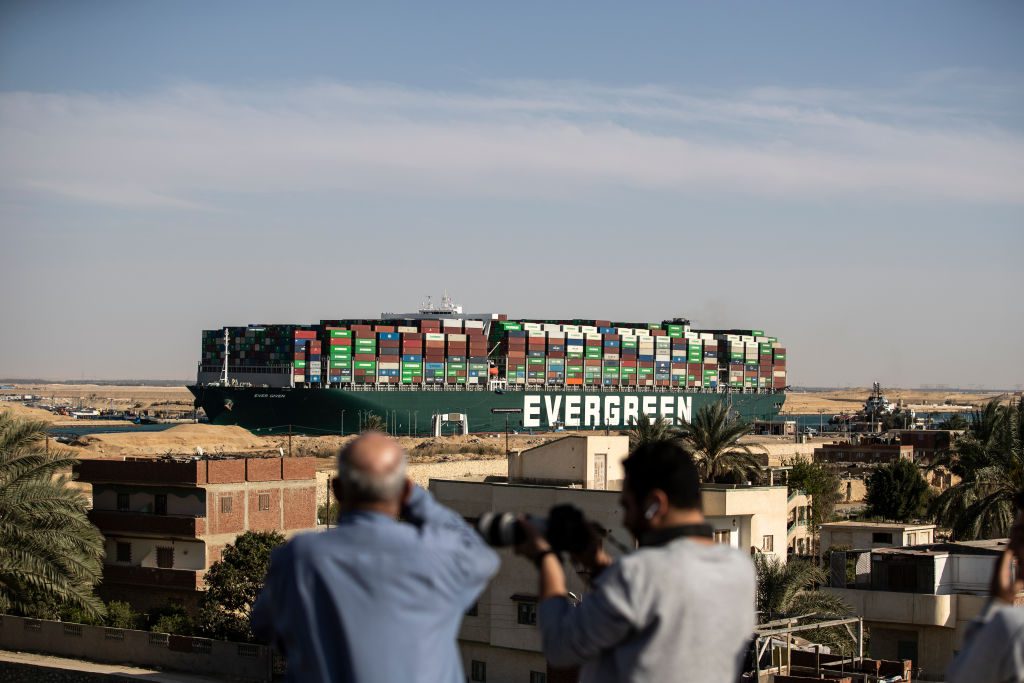Update: As of Monday 3/29/2021 the Ever Given has been dislodged, clearing the canal, but with hundreds of vessels still waiting for passage.
The 20,000 teu Ever Given ran aground this week, effectively shutting down the Suez Canal as crews work diligently to re-float the ship during high tide – an attempt that has so far been unsuccessful. The problem happened as the ship was in route from China to Rotterdam when heavy winds from a sandstorm pushed the ship sideways and into the eastern bank of a narrow spot in the Canal where ships must pass single-file.
The final opportunity to move the ship without unloading containers and bunker fuel will come on Monday when an extra high tide is expected, which pilots expect might grant enough lift to dislodge the vessel. Until then, analysts and reporters are using words like “pandemonium, chaos, and mayhem,” to explain the impact of this debacle.
The Suez Canal is the connection point between the Mediterranean and the Red Sea, where more than 50 ships pass each day, carrying 12% of the world’s global trade, 30% of all container traffic, and $9.7 billion per day in goods. Now, with 150 vessels sitting, waiting for the Ever Given to be moved, the impact could be catastrophic to the European ports waiting for the ships. Options are few and far between as carries only have two paths forward – waiting or going around.
Waiting could take weeks if the high tide float doesn’t work as salvagers will need to be called in to unload part of the cargo and drain fuel so the ship can be lightened enough to move. Because the ship currently weighs 224,000 tons (that’s half of a billion pounds) and is roughly the same size as the Empire State Building (1400 feet), it’s going to be a while before it can be lightened enough for tug boats to pull it off the shallows.
If the ships decide to go around? Well, if they start from Asia and navigate the Horn of Africa to reach Europe, it takes an extra week. If the ships stuck waiting turn out of the canal it will add 3800 miles to the trip, taking 13 extra days, and costing $300,000 in extra fuel costs.
It’s been a rough go for ocean moves lately. The USA West ports are digging out of from the delays specific to COVID making it challenging on equipment as well as timing exports to Asia. The USA West via Canada to Europe/Middle East/Africa continues to be impacted as well. The newest frustration around two-way traffic via the Suez Canal creates another factor impacting global trade. What does this mean for other modes of transportation? Expect capacity to hit hard, as shippers who have inventory issues will be turning to air, rail, and truck to avoid the issues on the water. Having a logistics plan with a provider who can quickly shift your cargo from ocean to air or truck is going to be the key to your success in the coming weeks. CFI is in your corner through this as we use our industry-wide connections and carrier relationships to support your logistics plan and provide you with options and solutions when times are tough.



